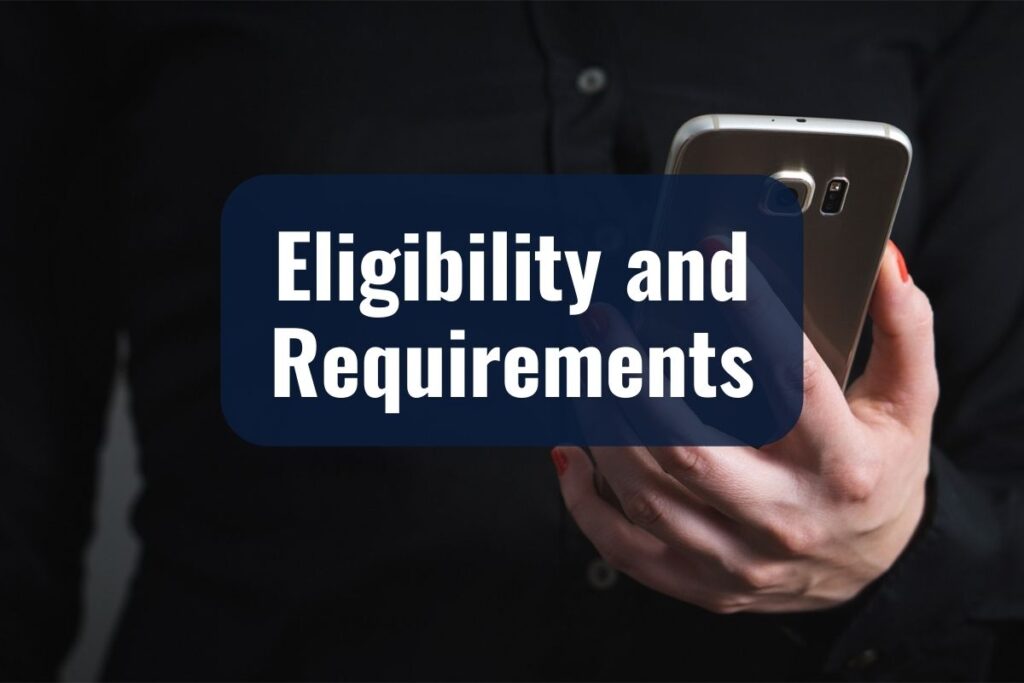Germany offers a unique solution for tech-savvy travelers, business professionals, and new residents seeking seamless connectivity: the eSIM. This article is your guide on how to get an eSIM in Germany, ensuring you stay connected in the most efficient way possible.
The eSIM, or Electronic SIM, stands as a beacon of convenience in the realm of telecommunications. Unlike traditional SIM cards, an eSIM is embedded directly into your device, eliminating the need for physical SIM card swaps. This feature is particularly advantageous in a country like Germany, where managing tech necessities can be a challenge, especially for those not well-versed in the German language.
KEY TAKEAWAYS
- eSIMs offer a convenient, digital alternative to traditional SIM cards for seamless connectivity in Germany.
- Ensure your device is eSIM-compatible and be prepared with valid ID and a payment method for the application.
- Research and select a mobile carrier that fits your needs and offers English language support.
- Activate your eSIM by following the carrier’s instructions, usually involving scanning a QR code.
- Manage your eSIM effectively by monitoring data usage and understanding network coverage.
- Be aware of potential limitations, like limited carrier options and network compatibility issues.
Understanding ESIMs
Before embarking on the journey of acquiring an eSIM in Germany, it’s essential to have a solid grasp of what an eSIM is and how it’s transforming the way we connect. An eSIM, or Embedded Subscriber Identity Module, is a digital version of the traditional SIM card. This innovative technology is embedded directly into your device, meaning there’s no physical SIM card to insert or replace.
What Sets ESIMs Apart
No Physical SIM: Unlike traditional SIM cards, eSIMs are built into your device, making them more convenient and less prone to damage or loss.
Ease of Switching Networks: With an eSIM, you can change your mobile operator without needing a new physical SIM, often with just a few clicks.
Multiple Profiles: Many eSIM-enabled devices allow you to store multiple profiles, making it easier to switch between different numbers or operators, a handy feature for international travel.
The Advantages of Using an ESIM in Germany
For those navigating the landscapes of Germany, whether as a visitor, business traveler, or new resident, eSIMs offer distinct advantages:
- Seamless Connectivity: Jump straight into the digital sphere of Germany without the hassle of physical SIM cards.
- Flexibility and Convenience: Effortlessly switch between operators to find the best deals and coverage as your needs evolve.
- Ease of Set-Up: Setting up an eSIM is typically a digital process, which can be a lifesaver for those who are not fluent in German.
Compatibility Check
Before proceeding, ensure your device is eSIM-compatible. Most modern smartphones, including many models from popular brands, support eSIM technology. A quick check of your device’s specifications online or a consultation with your device manufacturer can confirm this.
Related: How to get a prepaid sim card in Germany
Eligibility and Requirements

To smoothly transition to an eSIM in Germany, understanding the eligibility criteria and necessary requirements is crucial. This section will guide you through the basic prerequisites, ensuring you’re well-prepared before you begin the application process.
Basic Eligibility Criteria
Device Compatibility: First and foremost, your device must be eSIM-compatible. This is non-negotiable, as the eSIM technology is embedded in the device itself.
Identity Verification: As with most telecom services, you’ll need to verify your identity. This typically involves providing a form of official identification.
Essential Requirements
Compatible Device: Ensure your smartphone, tablet, or smartwatch supports eSIM technology. Check the manufacturer’s specifications if you’re unsure.
Valid Identification: You’ll likely need to present a passport or national ID card. For non-EU residents, additional documentation like a visa or residence permit might be required.
Payment Method: Have a credit or debit card ready for purchasing your eSIM plan. Some providers may also accept other payment methods like PayPal.
Age and Residency Status
Age Limitations: Most carriers require you to be at least 18 years old to apply for an eSIM.
Residency: While some providers cater exclusively to residents, others offer services to visitors and short-term travelers as well.
A Note on Device Compatibility
It’s important to note that not all eSIM-compatible devices support all eSIM services. Different carriers may have varying compatibility requirements. Therefore, it’s advisable to check with the specific carrier you’re interested in to ensure your device is fully compatible with their eSIM services.
Step-by-Step Guide on How to Get an ESIM in Germany
Acquiring an eSIM in Germany involves a few key steps, from selecting a suitable mobile carrier to activating your eSIM. This section provides a practical, step-by-step approach to help you navigate this process with ease.
1. Selecting a Mobile Carrier
Choosing the right carrier is crucial, as it impacts your experience in terms of coverage, cost, and customer service.
Research and Compare: Start by researching the major carriers in Germany that offer eSIM services. Look for user reviews and compare their plans, prices, and coverage areas.
Consider Your Needs: Think about your specific needs – data limits, calling minutes, network coverage, and any additional benefits.
Check for English Support: Since the guide is aimed at those who may not be fluent in German, ensure the carrier provides customer service in English.
2. Applying for an ESIM
Once you’ve selected a carrier, the next step is to apply for an eSIM. This process is typically straightforward and can often be completed online.
Visit Carrier’s Website/App: Go to the chosen carrier’s website or app. Look for the eSIM section or plan options.
Fill Out Application: Complete the application form. This will usually require personal details and identification for verification.
Choose Your Plan: Select the eSIM plan that best suits your needs. This might involve choosing between prepaid and postpaid options, as well as data and call packages.
3. Activating Your ESIM
After your application is approved and you receive your eSIM details, the next step is activation.
Follow Carrier Instructions: The carrier will provide specific instructions on how to activate your eSIM. This typically involves scanning a QR code or entering a confirmation code.
Set Up on Your Device: Go to your device’s settings and follow the steps to add a new cellular plan using the eSIM.
Troubleshooting: If you encounter issues during activation, refer to the carrier’s FAQ or contact their customer service for assistance.
Final Steps
Confirm Activation: Ensure that your device shows the new carrier’s network and that you can access mobile data and make calls.
Understand Your Plan: Familiarize yourself with the details of your plan, including how to check data usage, top up, or change plans if necessary.
Related: Mobile Networks in Germany: The Top 3 in 2024
Using Your ESIM in Germany

Once you’ve successfully obtained and activated your eSIM in Germany, it’s important to know how to make the most of it. This section offers practical advice on managing your eSIM for an uninterrupted and enjoyable connectivity experience.
Managing Your ESIM
- Checking Data Usage: Regularly monitor your data usage to avoid unexpected charges, especially if you have a limited data plan. Most carriers provide an app or an online dashboard where you can check your usage.
- Topping Up Online: If you’re on a prepaid plan, you can usually top up your data or credit through the carrier’s website or app, ensuring continuous service.
- Switching Plans or Carriers: One of the advantages of eSIMs is the ease of switching plans or carriers. You can often do this digitally without the need to visit a store.
Understanding Network Coverage
- Explore Coverage Maps: Familiarize yourself with your carrier’s network coverage, especially if you plan to travel around Germany.
- Roaming within the EU: Many German carriers offer seamless roaming in the EU. However, it’s always good to check the roaming charges and policies beforehand to avoid surprises.
Tips for Seamless Usage
- Stay Updated: Keep an eye on any updates or changes from your carrier that might affect your plan or service.
- Wi-Fi vs. Mobile Data: To conserve your data allowance, use Wi-Fi whenever possible, especially for data-intensive activities like streaming.
- Emergency Services Access: Remember that you can dial emergency services in Germany (112) from any mobile phone, even without a SIM card.
Seeking Help or Support
- English-Speaking Customer Service: If you encounter any issues or have questions, contact your carrier’s customer support. Many carriers in Germany offer support in English.
- Online Communities: Online expat communities and forums can be valuable resources for tips and advice from others who have used eSIMs in Germany.
Additional Considerations

While eSIMs offer a world of convenience and flexibility, there are some additional factors to consider when using them in Germany. Being aware of these can help you avoid potential pitfalls and make the most of your eSIM experience.
Potential Limitations
- Limited Carrier Options: Not all mobile carriers in Germany may support eSIM technology. This might limit your choices, especially if you’re looking for specific features or pricing plans.
- Network Compatibility Issues: Ensure that your eSIM is compatible with the carrier’s network technology. Germany primarily uses GSM networks, so compatibility is generally not an issue, but it’s always good to check.
Seeking Help or Customer Support
- English Language Support: While many carriers offer customer support in English, this might not be universal. It’s a good idea to confirm this before choosing a carrier.
- Tech Support Availability: Know how to access technical support, whether through a customer service number, online chat, or email.
Keeping Up-to-Date
- Regularly Check for Updates: Telecom policies and technologies are constantly evolving. Stay updated on any changes to eSIM policies or features that could affect your usage.
- Be Aware of Legal Changes: Occasionally, there may be legal changes in Germany affecting telecom services. Keep an eye on such developments, especially if they pertain to data security or privacy laws.
Final Words of Advice
- Read the Fine Print: Before committing to a plan, thoroughly read the terms and conditions to understand any limitations or additional charges.
- Plan for Backup: In the unlikely event that you encounter issues with your eSIM, having a backup plan, such as a physical SIM from a different carrier, can be a lifesaver.
Related: New to Germany: A Newcomer’s Guide to Living in Germany


